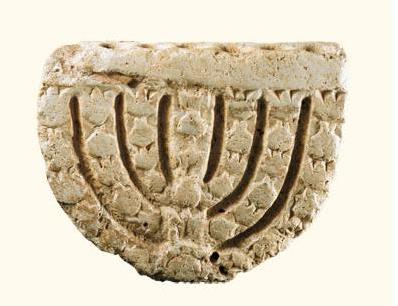Hammat Tiberias Menorah. Photo courtesy of the Israel Museum.
Stone menorah from the ancient Hammat Tiberias Synagogue, 4th-5th century CE
In 1920, when the road between Tiberias and Zemach was being paved, the workers came across some startling finds which made them stop in their tracks – they had unearthed the ancient town of Hamat Tiberias, including a seven-branched candelabra that is now on display in the Israel Museum in Jerusalem.
Hamat was also mentioned on other occasions in the Talmud in connection with the laws of Shabbat. One subject was the distance one can walk out of town on Shabbat (the residents were permitted to walk between Hamat and Tiberias) and the fact that because of its curative properties they were also allowed to bathe in the hot springs on Shabbat.
Herod Antipas, Herod the Great’s son, first built Tiberias in 20 CE. Somewhat jealous of his father’s prowess and fame as a builder, he wanted to show his own power and ability. However, he went a bit too far. Showing his contempt of Jewish custom, he had the audacity and stupidity to build the town on top of the site of a Jewish cemetery. Of course no self-respecting Jew, especially no religious Jew, would live there – not to mention the fact that no Kohen (priest) would go near the town, as for him the whole area was off limits because he was not allowed to enter a cemetery.
So Herod did what all despots resort to – he coerced a group of people to populate the town that he had so proudly built. But the town was still despised by most Jews.
Israel Museum
Goldberg, Ann, “Ancient Tiberias Reveals All Her Glory.” Jerusalem Post, October 18, 2007.
